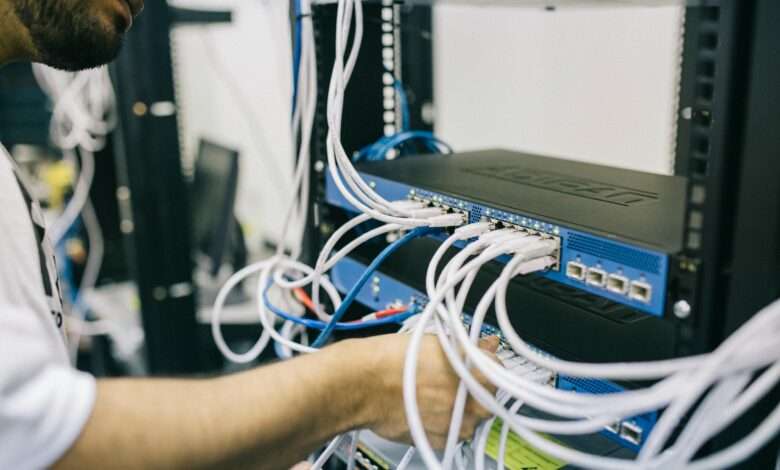
If you’re trying to access your router’s settings, you may have encountered the IP address 192.168.l78.1. However, this address is often a result of a common typographical error. The correct IP address for many routers is 192.168.178.1, and mistyping it can lead to frustration. In this article, we’ll delve into what 192.168.l78.1 represents, common login issues, and effective solutions to help you access your router seamlessly. This content is prepared by the editorial team at V Aiotechnical.com.
What is 192.168.l78.1?
Table of Contents
ToggleUnderstanding the Error
192.168.l78.1 is a miswritten version of 192.168.178.1, a private IP address often used by routers such as those made by Fritz!Box. When you type this incorrect address, you will not be able to reach your router’s settings. Recognizing this mistake is crucial for troubleshooting connection issues.
The Role of IP Addresses
IP addresses like 192.168.178.1 are essential for accessing the web interface of your router. Through this interface, users can configure various settings, including network security, Wi-Fi configurations, and connected device management. It’s vital to ensure you type the correct address to avoid access issues.
Common Mistakes with 192.168.l78.1
Typographical Errors
The most common error people make when trying to access their router is typing 192.168.l78.1 instead of 192.168.178.1. The lowercase “l” can easily be confused with the number “1.” This simple mistake can lead to confusion and hinder access to your router settings.
Formatting Errors
In addition to typing errors, incorrect formatting can also cause problems. Entering addresses like 192.168.1.78.1 or 192.168,178,1 will result in a failure to connect. It’s essential to use the correct format to ensure successful access.
How to Access Your Router Using 192.168.178.1
Step-by-Step Guide
To access your router, follow these straightforward steps:
- Open Your Web Browser: Launch a modern web browser such as Chrome, Firefox, or Safari.
- Enter the Correct IP Address: Type
http://192.168.178.1in the address bar and press Enter. - Login Prompt: You will see a login page requesting your username and password. Check the label on your router for the default credentials, which are often “admin” for both fields.
Common Login Issues with 192.168.l78.1
Forgotten Credentials
One of the most common issues users face is forgetting their router’s username and password. If you’ve changed these from the defaults and can’t remember them, you may need to reset your router.
Incorrect IP Address Usage
Another frequent problem arises from entering the wrong IP address. Double-check to ensure you’re using 192.168.178.1 and not the erroneous 192.168.l78.1.
Browser Compatibility Issues
Occasionally, certain browsers may cause problems when accessing the router interface. Ensure you are using an updated browser and consider trying a different one if you encounter difficulties.
Troubleshooting Login Issues with 192.168.l78.1
Verify the IP Address
Start by verifying that you are using the correct IP address. Input 192.168.178.1 carefully to avoid errors.
Clear Browser Cache
Old cache files can interfere with loading the router’s web interface. Clear your browser’s cache and cookies, then try accessing the IP address again.
Restart Your Devices
A simple restart can often resolve connectivity issues. Restart both your router and the device you’re using to access it.
Resolving IP Address Conflicts
Check Device Configuration
IP conflicts can lead to problems accessing the router. On a Windows PC, you can check your device’s IP configuration by opening Command Prompt and typing ipconfig. Ensure your device’s IP is in the same subnet as 192.168.178.1.
Ping the Router
To confirm that the router is accessible, you can use the command ping 192.168.178.1 in Command Prompt. This will help you determine if the address is reachable from your network.
Fixing Browser Compatibility Problems
Switching Browsers
If you suspect your browser is causing login issues, try switching to another browser. Sometimes, specific browsers can interfere with the connection to the router.
Disabling Extensions
Browser extensions like ad-blockers or VPNs can also impact your ability to log in. Temporarily disable these extensions to see if that resolves the problem.
Handling Forgotten Login Credentials
Resetting the Router
If you’ve forgotten your router’s login details, you can reset the router to its factory settings. Locate the reset button, usually found on the back of the router, and press it with a pin. This action will restore the default username and password.
Addressing Router-Specific Login Issues
Firmware Updates
Ensure your router’s firmware is up to date. Outdated firmware can cause connectivity issues. Access the router settings to check for any available updates.
Alternative IP Addresses
Some routers may use alternative IP addresses. If 192.168.178.1 doesn’t work, consider trying 192.168.0.1 or 192.168.1.1, which are common for many router brands.
Understanding Router Indicator Lights
Diagnosing Connection Issues
The lights on your router can help diagnose connectivity problems. A solid green light typically indicates normal operation, while red or blinking lights may signal issues.
What to Do If You Still Can’t Access 192.168.l78.1
Contact Your ISP
If you’ve tried all troubleshooting methods and still can’t access your router, contact your Internet Service Provider (ISP). They may have specific settings or restrictions in place.
Seek Manufacturer Support
Most router manufacturers provide online and phone support to assist with access issues. Don’t hesitate to reach out for help.
Security Tips for Router Access
Change Default Passwords
One of the best practices for securing your router is to change the default login credentials. Use a strong, unique password to enhance security.
Enable Firewall and Encryption
Utilize your router’s built-in firewall and encryption settings (like WPA3 for Wi-Fi) to protect your network from unauthorized access.
Conclusion
Navigating the challenges associated with 192.168.l78.1 can be frustrating, but understanding common issues and their solutions can simplify the process. By following the tips and troubleshooting steps outlined in this article, you’ll be better prepared to access your router and manage your network effectively. Always ensure to maintain security practices, such as changing default passwords and updating firmware.
This review has been prepared by V Aiotechnical.com to provide you with the most comprehensive information on router access issues. If you encounter any further problems, refer back to the troubleshooting steps or seek professional assistance.





